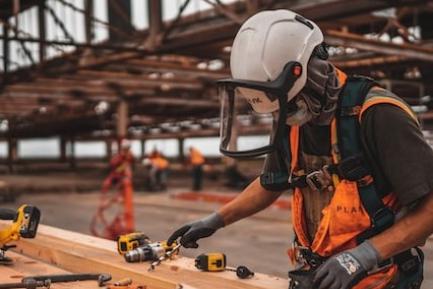
Taking stock of the «intermediate» sectors in Spain
Some sectors have suffered enormously as a result of the pandemic, while others have managed to continue to grow. Between these extremes are those we can call «intermediate» sectors.
- Some sectors have suffered enormously as a result of the pandemic, while others have managed to continue to grow. Between these extremes are those we can call «intermediate» sectors.
- Most sectors show a deterioration in their economic and financial situation, but they will bounce back quickly when the mobility and activity restrictions are lifted.
We are all well aware that the impact of the pandemic has varied widely from sector to sector. Those linked to tourism and leisure have suffered disproportionately. At the other end of the spectrum, some sectors, such as agriculture, forestry and fishing, or public administrations, education and health, have seen their activity increase during the pandemic. In this article, we focus on all the other sectors: the ones which, while having been dealt a heavy blow, have suffered less than those hardest hit. We will call them the «intermediate» sectors.
In the first chart, we show data on the gross value added (GVA) by economic sector (based on the official NACE classification). The horizontal axis shows the drop in GVA in Q2 2020 relative to the pre-crisis level of Q4 2019, while the vertical axis shows the drop in Q4 2020 compared to the pre-crisis level. The red dotted line separates the area denoting a recovery in the GVA between Q2 and Q4 2020 (above the line) from that denoting a further decline (below the line). The black dotted line, meanwhile, marks the recovery rate of GDP between Q2 and Q4 2020.1
- 1Specifically, if we take any given sector and start from the level of activity it has lost up until Q2, the black line tells us where this sector’s level of activity would have been in Q4 if it had recovered at the same rate as aggregate GDP.

We can draw several messages from the chart. Firstly, there is a great deal of disparity in the drop in GVA between the various sectors. As is already known, the biggest declines in Q2 were endured by the retail, transportation and accommodation sectors, as well as that of arts, entertainment and recreation services exceeding 30%. In contrast, there are some sectors that have seen their GVA increase compared to Q4 2019. Secondly, we see how the recovery was widespread from Q2 onwards (all sectors are above the red dotted line). Thirdly, the pace of recovery between sectors has also been very uneven. The vast majority of sectors lie in the area between the red and black dotted lines: these are the sectors that have recovered since Q2, but have done so at a slower pace than domestic GDP. Among the sectors that had suffered the most in Q2, the manufacturing sector has recovered at a quicker rate than national GDP, while sectors such as construction and that of arts, entertainment and recreation services have recovered at a notably slower rate (i.e. they lie further away from the the black dotted line).
To assess in further detail each sector’s ability to bounce back, we use the Lockdown Index (LI) developed by CaixaBank. The LI measures the change in the banking transactions of small and medium-sized enterprises as a result of the COVID-19 crisis, taking into account a wide range of indicators.2 A value close to or below zero denotes that the company’s economic and financial situation is similar to or better than what it was in the same month of the previous year.3 A higher value, meanwhile, indicates that the company’s economic and financial situation has deteriorated. In addition, values above 0.3 indicate a marked deterioration in the company’s economic and financial situation.
In the second chart, we show the LI by sector between March and May 2020 and compare it with the values registered between December 2020 and February 2021.4 We emphasise different areas of the chart. Firstly, we can see that companies’ economic and financial situation deteriorated in all sectors during the first few months of the pandemic (the index shows positive values for all sectors). However, we can also see that, since then, the situation has improved in almost all sectors (most are below the diagonal line). Secondly, we see that only one sector – that of tourism/hospitality – continues to endure a very adverse economic and financial situation despite the improvement in recent months (it is the only sector in the dark red quadrant). In addition, a small set of sectors (light red area), including the leisure and the textile/footwear sectors, have gone from a severe deterioration in their financial situation to a moderate one. Finally, we see that the vast majority of sectors (light blue area) have continued to have a moderate deterioration in their economic and financial situation. Therefore, most sectors present a deterioration in their economic and financial situation, as we would expect given the crisis we are going through, but they should experience a rapid revival once the mobility and activity restrictions are lifted.
- 2These include indicators related to income (e.g. sales registered on POS terminals), expenditure (e.g. payroll or bill payments) and defaults, among other variables.
- 3More specifically, a value below 0.08.
- 4Since these are internal data, the economic sectors do not correspond exactly with the NACE codes.

Following this performance in 2020, and bearing in mind that the third wave of infections in Q1 will most likely put the recovery on hold until Q2 2021, what contribution could the recovery of activity in these «intermediate» sectors provide to GDP?5 The answer is subject to a high degree of uncertainty, given the question marks over the speed with which the mobility/activity restrictions will be lifted and how this process will affect each sector. However, it is clear that the intermediate sectors, which make up 47.6% of the economy6 and have a good potential to recover, will make a significant contribution to the recovery of aggregate economic activity as the restrictions begin to be eased. By way of example, if in a given quarter the recovery was such that the whole of these intermediate sectors recovered up to 75% of the GVA that was lost between Q4 2019 and Q2 2020 (in Q4 2020 these sectors had already recovered 62%, so this assumption does not appear to be overly optimistic), then the contribution to quarterly GDP growth from these sectors would be around 1.4 pps.
- 5The «intermediate» sectors include that of manufacturing (NACE code B-E), construction (NACE code F); professional, scientific and technical activities (code M-N); telecommunications (code J); and real estate activities (code L). We exclude the retail, transportation and accommodation sectors (code G-I), as well as that of arts, entertainment and recreation (code R-T), as they are the sectors hardest hit by the pandemic and are expected to recover more slowly. We also exclude sectors that have seen their GVA increase during the pandemic (sectors with NACE codes A, K and O-Q).
- 6According to data for Q4 2020.



